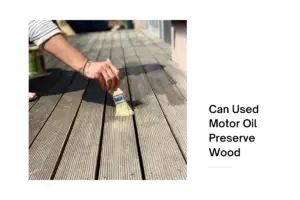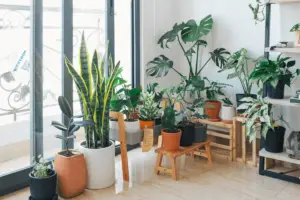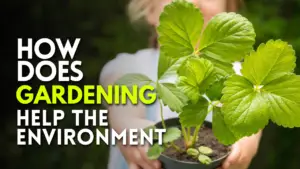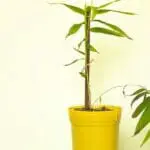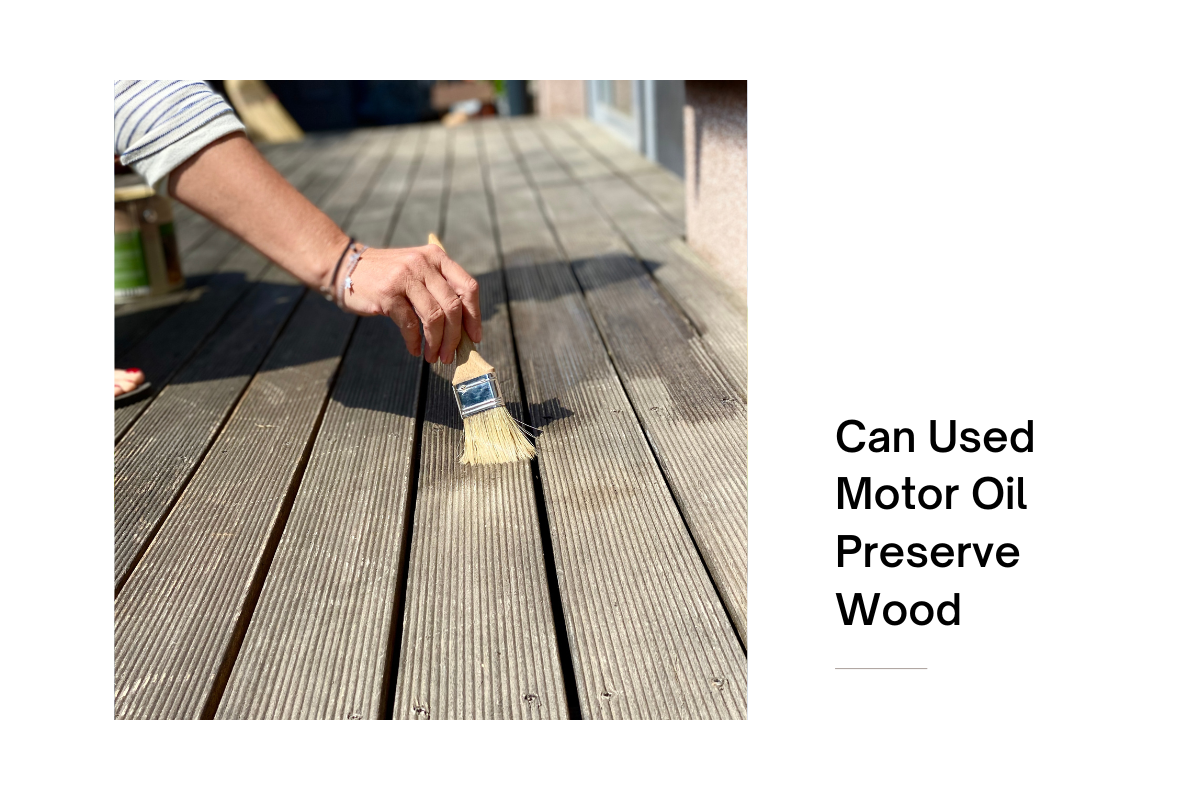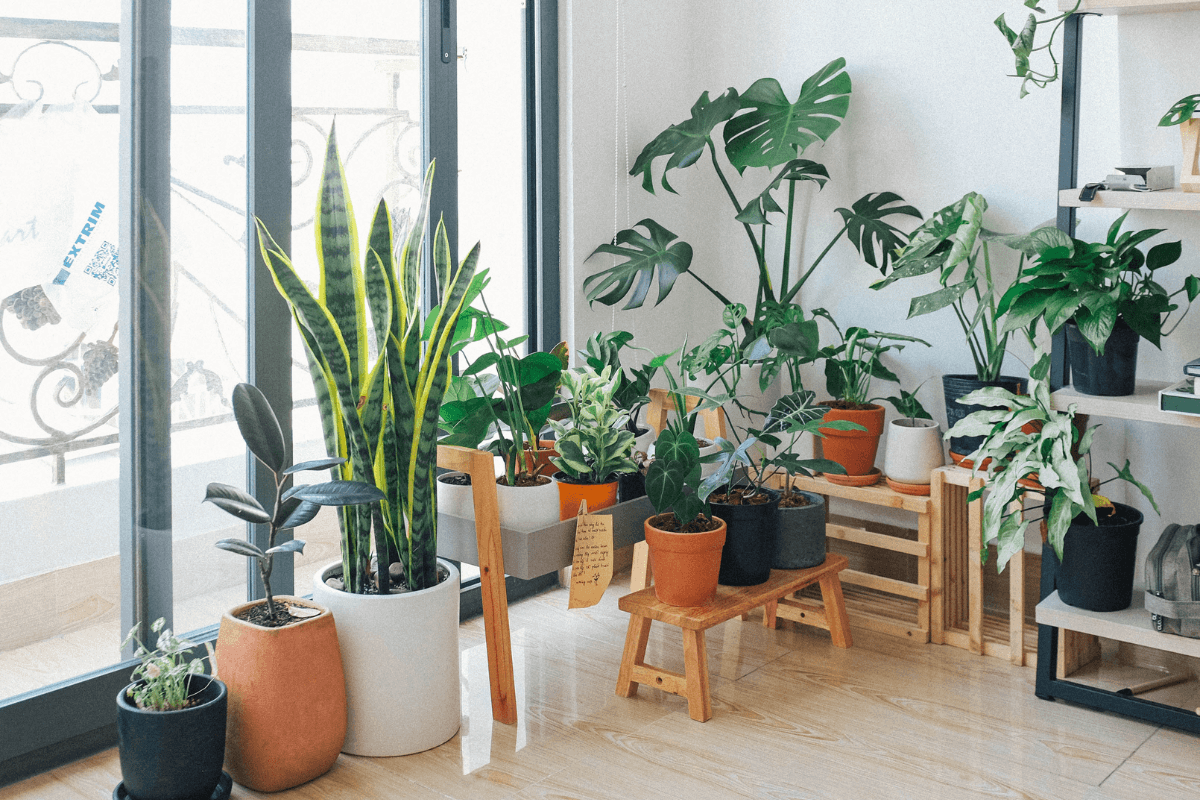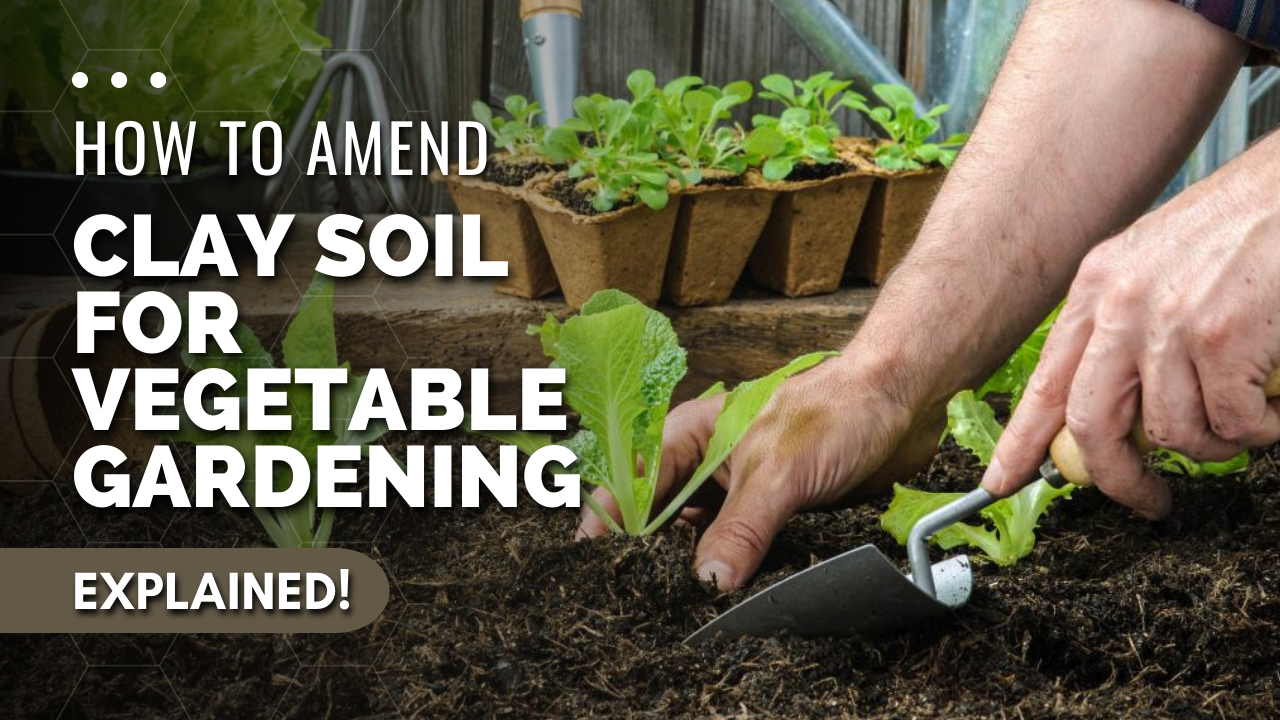Humidifiers are a great way of getting your houseplants to prosper, particularly tropical plants that may suffer during colder months when the air is dry. They work by adding moisture to the air to create the ideal growing conditions for your plants.
As humidifiers are primarily used to keep room humidity at a nice level for people, how can you be sure that the humidifier you have found is right for you and your plants?
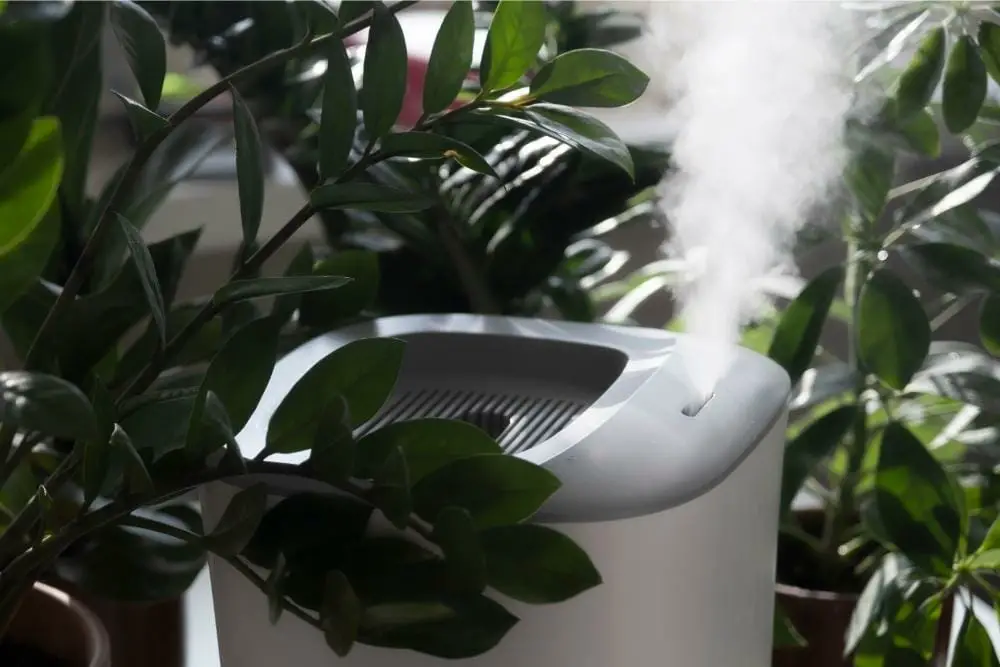
Use this handy guide to make sure that your humidifier is right for you, as well as some handy tips to make sure you are getting the most out of your machine.
1. Honeywell Cool Mist Humidifier

This humidifier is a great option if you keep your plants. The wicking filter traps minerals from the water which will prevent white dust to keep your plants and surfaces clean. The wide brim tank is easy to open and super easy to keep clean.
This humidifier comes with three settings so you can find the best output mode to meet your plants’ needs. This humidifier is best suited for a medium-sized room to keep a constant humidity percentage.
Pros:
- If cleaning your humidifier by hand is not feasible, this water tank is dishwasher safe.
- The water tank can hold up to a gallon of water and run for around 24 hours before needing to be refilled – perfect for those who don’t have a lot of time for maintenance.
Cons:
- It is a cool mist humidifier which means it sprays mist using fans so it can be a little noisy.
2. Elechomes Large Room Humidifier

This humidifier has a super sleek design, featuring rotating nozzles for an even 360° coverage of mist. This humidifier holds up to 5.5l and has up to 55 hours of use in a single full tank.
This is not just uber-modern in design as it comes with the option for automated shut-off and can be operated by remote control. This humidifier can also be used for both warm and cool mist – this humidifier is truly at the forefront of innovative design.
Pros:
- This water tank can be filled directly from the top without any taking apart and reassembly.
- Comes with a whisper mode which is really quiet – you really won’t notice this humidifier is on.
Cons:
- Some reviewers have mentioned that white dust is an issue with this humidifier so be sure to use distilled or demineralized water.
3. Geniani Portable Desk Humidifier

This is a great option for those who want a small humidifier and it is budget-friendly too. Its water tank can hold 250ml and will run for around eight hours on the lower output setting.
This slim design makes it the perfect option for desk plants or plants in small spaces and is fairly quiet for minimal distractions.
Pros:
- This humidifier is available in three colors so it is guaranteed to fit your space; you can also opt for the 4l tank version if you do not want to refill often.
- Two output options allow you to choose which setting will suit your space best.
Cons:
- This is a very efficient humidifier so be sure to monitor humidity to prevent excessive moisture build-up.
4. Papoper Portable Mini Humidifier

If you want a humidifier but don’t like the look of others available, opt for this cute wooden design.
This cool mist humidifier can operate continuously for around six hours, the perfect length of time for plant health. It is also designed with ultrasonic technology for an incredibly quiet, ambient sound when on. While you have the option of adding essential oils to this humidifier, this is not recommended as it could harm your plants.
Pros:
- USB cable for easy connection to a computer or wall socket.
- Super cute design means this humidifier won’t be out of place in your home but is small enough to be easily disguised if you want.
Cons:
- All functions are controlled by one button so it may take a while before you are 100% au fait with this humidifier.
5. Honeywell Cool Mist Humidifier

This humidifier is more high-tech than others available at the moment, offering up to eight hours of operation before a refill is needed and up to 24 before it needs charging. The maximum coverage for this humidifier is around 600 sq ft, ideal for plant lovers with an extensive collection.
All of this humidifier is washable for unparalleled hygiene and the ultimate plant health. Such easy washing of the water tank as well as the ultrasonic mist maker and fan, mean that white dust is well and truly controlled.
The NR08M humidifier gives you the option to connect to an app via a Bluetooth chip for easy control of your humid environment.
Pros:
- Easy to disassemble for cleaning and general maintenance.
- Unique floating design is a great feature – a definite talking point that will complement your plant setup.
Cons:
- This machine beeps whilst but this can be turned off if it is too distracting.
6. DCMEKA Mini Humidifier

Want a humidifier with a unique design? This super cute DCMEKA humidifier is a great choice for you.
This humidifier comes with a built-in plant pot, perfect for plants that really crave humidity for an added boost of green to your desk space.
Pros:
- A long USB cable lets you move this humidifier freely around your space.
- Automated power off kicks in after four hours, ensuring your humidifier never runs out of water and prevents excessive moisture in the air that would otherwise have a detrimental impact.
Cons:
- This humidifier comes with an artificial succulent plant – the nemesis of any plant parent!
Buyer’s Guide
Humidifiers have a great impact on your plants, but can also be good for a plant-parent’s health. The increase in moisture in the air as a result of a humidifier limits microbes in the air – great for plant and humans alike.
The increase in humidity will stop the plant drying out and looking dull which will in turn increase the plant’s ability to photosynthesise as chlorophyll will be bountiful. Be sure to keep only humidity-friendly plants in a room with a humidifier – succulents are a no go!
Plant Humidifier Maintenance
If you ensure that your humidifier is well looked after, you are going to get better performance and prolong its life.
Firstly, you need to work out what the most beneficial type of water is going to be for your plant setup. Using tap water is, unfortunately, not the best option. Instead, try using distilled or demineralized water.
Water with high mineral content, such as rain or tap water in some areas, will leave a layer of residue once the water has evaporated. This is called white dust and can also form in the water tank which can promote the growth of bacteria.
You should try to keep the humidifier as clean as possible so aim to clean once a week. This will ensure that the mineral and dirt build-up is minimal. This will also limit any bacterial growth.
The actual tank needs to be cleaned with bleach and then rinsed thoroughly. If your humidifier comes with a filter you need to make sure it is replaced per the manufacturer’s instructions for the best hygiene practice.
It is a good idea to also invest in a hygrometer to get an accurate reading of the moisture available in the room. You need to avoid extremes so if the room humidity is too high, lower your humidifier’s output, if humidity is too low increase output.
Types of Humidifier
There are two types of humidifiers – ones that produce warm mist and humidifiers that produce a cool mist. At the basic level, however, they both do the same thing.
Cool mist humidifiers: These humidifiers are usually a little more budget-friendly and they use fans that spin round to release moisture. They need to be cleaned regularly to avoid mineral and bacterial build-up but do a good job of lowering evaporation as these humidifiers have an inversely proportional relationship between evaporation and humidity – this just means that as the humidity increases, the rate of evaporation is lowered.
Warm mist humidifiers: These humidifiers require less cleaning than a cool mist, but are more costly to purchase and to run. As they are warm, they can get a room to a much higher humidity than cool mist humidifiers as warmth lets more moisture be held in the air. As they do get warm, it needs to be placed out of reach for pets and children for safety.
When shopping for a humidifier, keep these differences in mind so you can find your best match.
Things to Remember
Humidifiers are a great gadget for plant lovers, allowing you to keep tropical plants and indoor plants in a high state of health for years. However, unless properly maintained and used they can be detrimental to the health of the plant.
Remember the following to ensure that you are always getting the best results from your humidifier:
- Be sure to clean properly to prevent bacteria and fungus from growing. If these microbes are able to grow in an unclean tank, they will then be released into the air and land on your plants which will eventually cause disease.
- Keep the humidity below 60% for the best health. Any higher and you run the risk of excessive bacterial and fungal growth. If you are unable to get a humidistat, keep an eye on the plants’ surroundings. If you notice mold growing in the room or moisture on the insides of the windows that the humidifier is kept in, the humidity is far too high.
- Use distilled or demineralized water where possible, otherwise be prepared to deal with white powder around your space. This is a bit more problematic for plants as white dust can block the pores of the plant and this will limit photosynthesis. Eventually, your plant will wilt and look dry. Be sure to wipe down your plants often with lukewarm water.
- Do not leave water in your humidifier if you are not using it. Doing so will result in mold and other microbes growing in the tank as the water will sit undisturbed. Be sure to clean your tank before and after use with bleach to kill off any unwanted microbes.
Frequently Asked Questions
What type of humidifiers are best for plants?
The best humidifier for your plants will depend on your own preferences.
You can opt for a small humidifier if you have a smaller collection and like to be able to move it around easily. A small humidifier is also more appropriate for a smaller space and can be easily disguised if you prefer just seeing your plants.
Some people are best suited to a humidifier with a large tank – a humidifier with a tank that can hold 17oz (500ml) of water can create mist for around ten hours. If you are happy to regularly fill up your tank, go for a smaller one to save space.
Other things to consider are the mist direction, remote control or timing features, and if you think your plants would enjoy some colorful LED lights.
What are the benefits of a humidifier for plants?
A humidifier adds moisture to the air (humidity) to reduce the rate of evapotranspiration in plants and keep the plants moist. Keeping moisture keeps them healthy and looking their best, even in the dry air of winter – no dull wilted leaves in sight!
Having a room with high humidity will reduce the rate of infections in your space as bacteria and viruses cannot survive the moist air. As such, a room with high enough humidity will help a plant recover from most diseases.
How do you use a plant humidifier?
Connect your humidifier to a power source and add water to the tank per the manufacturer’s instructions. Close the lid and turn on your humidifier.
Select a duration and mist intensity and you are all set. Just make sure to clean your humidifier frequently to prevent a build-up of mold in the water tank. This will harm the health of your plants.
How close do my plants need to be to the humidifier?
The ideal location for a humidifier is between your plants or on a shelf that is close to your plants. Avoid letting the mist fall directly onto the leaves as this will create the perfect conditions for mold and fungus to grow. For the best results, you can use a humidity meter and find the best spot with the highest humidity.
Does my plant need a humidifier?
There are several species of plants that absolutely need a humidifier. If you are unsure of a specific variety of plant you should do some research to find out the best levels of humidity for your specific plant.
Plants that need humidity and could benefit from a humidifier include Air plants; Alocasias; Anthuriums; Calatheas; Carnivorous plants; Ferns; Fiddle leaf figs; Monsteras; Nerve plants; Orchids; Pilodendrons; Prayer plants; and most other tropical plants.
When should I run my humidifier?
Ideally you should run your humidifier from the morning until around lunchtime. This is enough time for the room to become nice and humid for your plants but isn’t so long that your plant’s natural cycle will be disrupted.
How long should I run my humidifier?
You can run your humidifier for a few hours in the morning. For the best results, have your humidifier on for more than two hours but less than six. You can purchase a humidifier with an automatic function to make timing your humidifier properly easier.
Your humidifier should not be run overnight because this will upset your plants’ natural cycles.
Do my plants need a cool or warm mist humidifier?
Cool and warm mist humidifiers work in largely the same way, the difference being that warm mist humidifiers heat up the water that is then released as steam. There is evidence that warm mist humidifiers can improve the quality of the air but you can get the same effect in a cool mist humidifier by using filtered water.
If your plants are in a house with children or pets it is best to opt for a cool mist humidifier for safety. Another thing to consider is the fact that a warm mist humidifier will cost more to run and maintain.
Can a humidifier cause mold?
There is a chance that a humidifier will cause mold, but there would need to be quite strict conditions for this to happen. To avoid mold, do not let your humidifier run constantly and try to place it in a large room.
To avoid mold on your plants, do not let a film of water build up on the leaves as this is the perfect breeding ground for microbes.
What size humidifier do I need?
For a room that is 300 sq ft or under, all you need is a small humidifier. For any room up to 500 sq ft go for a medium-sized humidifier. If your room is over 500 sq ft, go for a larger product.
You should keep these measurements in mind when shopping as a poor size selection is likely to produce more work for you in terms of maintenance, as well as make the overall humidity of a room difficult to control.

